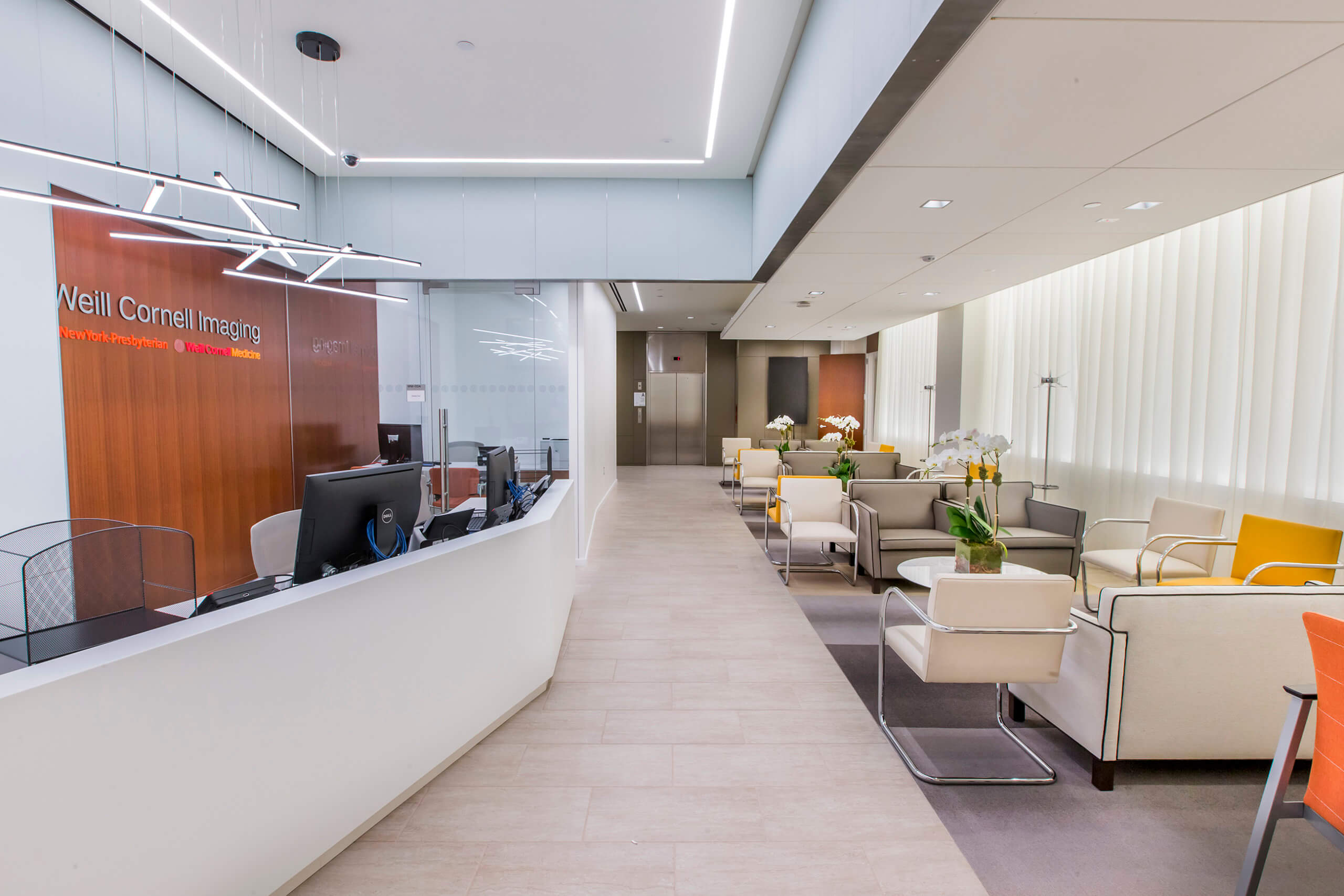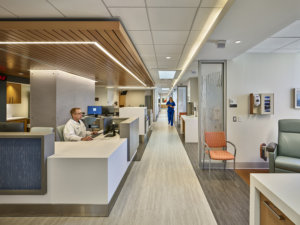Over the past decade, the healthcare industry has transformed its approach to care by prioritizing a personalized, patient-focused experience. This includes creating hospitality-like environments within healthcare facilities and placing an increased focus on evidence-based design initiatives like biophilia. Biophilic design emphasizes humans’ connection to nature. Elements of nature are incorporated into the design to reduce stress and promote well-being.
As medical providers look to incorporate these design strategies into their facilities, they are often met with challenges. This is especially true in dense urban environments where facilities may be landlocked or located in older buildings with low ceiling heights and minimal access to daylight. In these scenarios light can be a fundamental tool for combating physical restraints. Light has the ability to impact perception of space, evoke emotion, and create visual awareness.
Spatial Perception – Illuminating Surfaces
The combination of low ceilings and minimal daylight penetration into a space creates the perception of a cave-like environment. While filling a space with 2×4 troffers will technically increase light levels, it is not necessarily comfortable or welcoming. This approach tends to create too much uniformity and may conjure negative associations with institutional environments.
By directly illuminating vertical surfaces and indirectly illuminating the ceiling lighting designers can create a high level of diffuse light in a space. This takes the emphasis off the light source and places it on the architecture, making it feel larger and brighter. Layers of light that emphasize architectural details add much-needed contrast reinforcing a hospitality-like environment. Additionally, selectively illuminating vertical surfaces or artwork redirects focus, facilitating positive distraction.
Biophilia – Simulating Daylight
As humans, we have a strong connection to the natural environment. Access to daylight is an important factor in improving patient recovery times and overall patient satisfaction. Urban healthcare facilities may not have access to natural light, due to location or other facility constraints. However, the appearance of natural light can be achieved using both architectural and electric lighting interventions.
Architectural light boxes can successfully create the appearance of windows and skylights in facilities with limited or no access to daylight. While they can be cumbersome to implement and traditionally require a lot of depth, manufacturers now offer shallow prefabricated light boxes that can easily integrate into ceilings and walls. Some manufacturers are taking this approach is a step further and fabricating edge-lit LED systems with mullions, window grids, and tunable white lighting which recreates the appearance of daylight through windows. If a project’s budget doesn’t allow for these types of systems, simple enhancements like perimeter cove lighting can be paired with curtains to mimic a window and provide a homey appearance.
Affordability – The Right to Quality Design
The appearance of a building and project budget tends to be indicative of the socioeconomic status of the surrounding community. The appearance of a building and project budget tends to be indicative of the socioeconomic status of the surrounding community. Per U.S. Census data, anywhere from 15% to 30% of people within the most populated U.S. cities live below poverty, which means many underprivileged communities are subject to lower quality healthcare facility design.
As humans, we all have the right to quality design. A lower budget does not necessarily equal a low-quality lighting system. A successful lighting solution is achievable within healthcare projects with small and large budgets. It’s important to first establish a hierarchy so that lighting budgets can be strategically applied to higher impact patient & visitor areas. Once that hierarchy is established, budgets should be checked at various intervals throughout the design processes to keep the team on track. Additionally, a project does not need to use the most expensive manufacturer or latest technology to incorporate evidence-based design strategies. There are many budget-friendly products available that can be utilized to provide good quality lighting. By being thoughtful of how a budget is applied, designers can apply high-end design strategies to make the experience of patients and visitors more pleasant.




